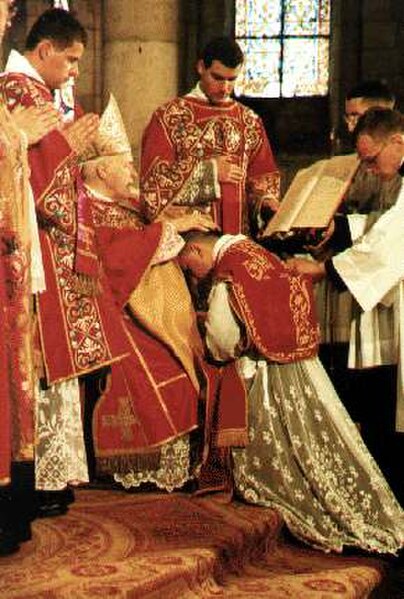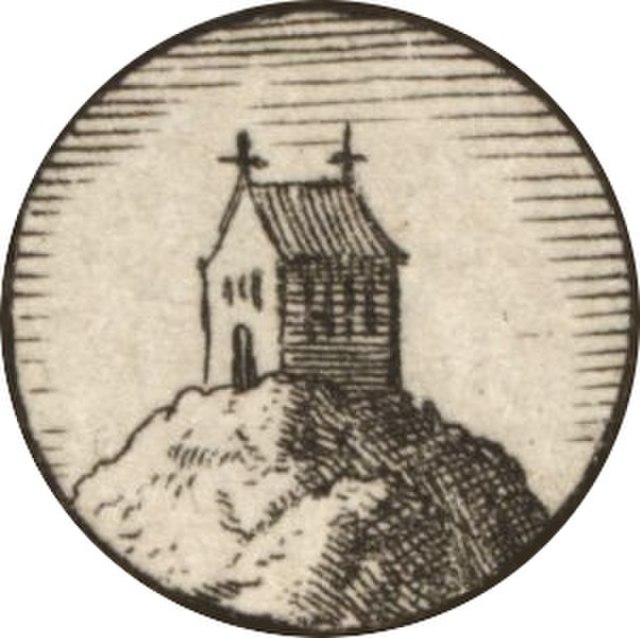Apostolic succession is the method whereby the ministry of the Christian Church is considered by some Christian denominations to be derived from the apostles by a continuous succession, which has usually been associated with a claim that the succession is through a series of bishops. Those of the Catholic, Eastern Orthodox, Scandinavian Lutheran, Anglican, Oriental Orthodox, Church of the East, Hussite, Moravian and Old Catholic traditions maintain that "a bishop cannot have regular or valid orders unless he has been consecrated in this apostolic succession". These traditions do not always consider the episcopal consecrations of all of the other traditions as valid.
Episcopal consecration of Deodatus; Claude Bassot [fr] (1580–1630)
Catholic ordination ceremony
Stained glass window in a Catholic church depicting St. Peter's Basilica in Rome sitting "Upon this rock," a reference to Matthew 16:18. Most present-day Catholics interpret Jesus as saying he was building his church on the rock of the Apostle Peter and the succession of popes which claim Apostolic succession from him.
A 17th century illustration of Article VII: Of the Church from the Lutheran Augsburg Confession, which states "...one holy Church is to continue forever. The Church is the congregation of saints, in which the Gospel is rightly taught and the Sacraments are rightly administered." Here the rock from Matthew 16:18 refers to the preaching and ministry of Jesus as the Christ, a view discussed at length in the 1537 Treatise.
In ecclesiology, the Christian Church is what different Christian denominations conceive of as being the true body of Christians or the original institution established by Jesus Christ. "Christian Church" has also been used in academia as a synonym for Christianity, despite the fact that it is composed of multiple churches or denominations, many of which hold a doctrinal claim of being the "one true church" to the exclusion of the others.
Medieval illustration of the ecclesia from the Hortus deliciarum of Herrad of Landsberg (12th century)
An Eastern icon depicting the Descent of the Holy Spirit. The date of Pentecost is considered the "Birthday of the Church".
An icon depicting Constantine I, accompanied by the bishops of the First Council of Nicaea (325), holding the Niceno–Constantinopolitan Creed of 381.
The Church is the congregation of saints, in which the Gospel is rightly taught and the Sacraments are rightly administered. –Augsburg Confession

![Episcopal consecration of Deodatus; Claude Bassot [fr] (1580–1630)](https://upload.wikimedia.org/wikipedia/commons/thumb/0/0b/Cons%C3%A9cration-de-D%C3%A9odat.jpg/360px-Cons%C3%A9cration-de-D%C3%A9odat.jpg)



